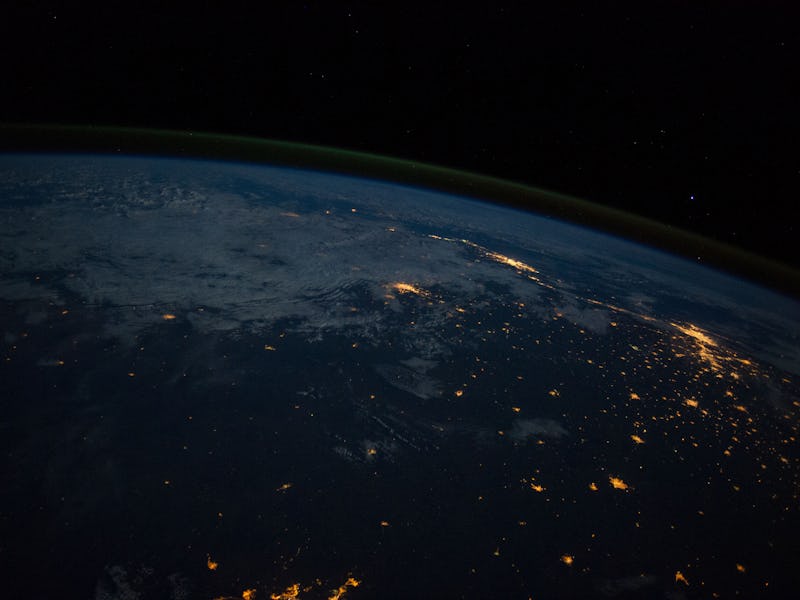From Space, the Olympics Look Like Lite Bright
It's amazing what astronauts can (kinda) see from orbit.

The 2016 Summer Olympics are underway in Rio de Janeiro and the whole world is watching on TVs, smartphone, computers, and VR headsets. The crew on board the ISS is watching as well, both in the traditional sense — they get the broadcast — and in a very different way. When their station passes over Brazil, the astronauts aboard will likely be able to spot the signs of a mega event. Fittingly, the games themselves become a sort of giant torch.
Astronauts can’t actually watch any of the games from space. That said, there are military satellites orbiting the planet that could provide extremely high-resolution imagery of beach volleyball. One of the most powerful orbital snoops is China’s Gaofen 4, which can focus on the surface with resolutions under 50 meters. The black and white imagers can distinguish on a scale of five to six inches, meaning it would theoretically be possible to find Manu Ginobili’s bald spot.
But astronauts aboard the ISS don’t get that sort of resolution. The space cowboy eye view of the Olympics is very different. The ISS completes an orbit every 92.69 minutes, so every hour-and-a-half or so, the crew aboard can look down and see the Brazilian city. But that doesn’t necessarily mean they can see the games every time.
First of all, there’s the obvious obstruction: clouds. Rio is hardly a cloudy city, but it rains relatively regularly and the hills around it sometimes capture cooler air in such a way that it might appear, from above, to be a bowl full of grey cotton candy.
On a sunny day, pollution is the problem, but it might not affect the view too much. While smog was the big issue for the Beijing 2012 Olympics, Rio has less to worry about when it comes to air pollution, and more concerns arising from its poisoned waterways. There is no shortage of satellite imagery illustrating just how rotten some of Rio’s waters have gotten. It’s certainly not a pretty site for anyone trying to enjoy an aerial view of the games. Just last November, NASA posted a pretty damning satellite image of a broken dam allowing orange-brown contaminated water to flow into the Atlantic. That said, it doesn’t interfere with the view.
But how detailed is that view? Not very. Though DigitalGlobe created a slideshow of the games’ major venues using a satellite almost 100 miles further up than the ISS, which circles 249 miles above the surface, that satellite is rocking a hell of a zoom lens. A naked eye view doesn’t allow for that sort of detail. The beach is clearly visible, but spotting the facilities built for the event would prove difficult.
That changes at night. The Olympic facilities are — in the grand tradition of Olympic facilities — lit as hell. Rio is already visible as a blotch of light from space and the facilities make that blotch (or the clouds above it) brighter. And that’s pretty much what the games look like for astronauts, a relative increase in brightness in a specific area. It may not be jaw-dropping, but it’s inspiring in its own way.
It’s also fun for the astronauts in question. There are currently six astronauts on the space station: two Americans, three Russians, and one Japanese. Things could get heated during the gymnastics finals.